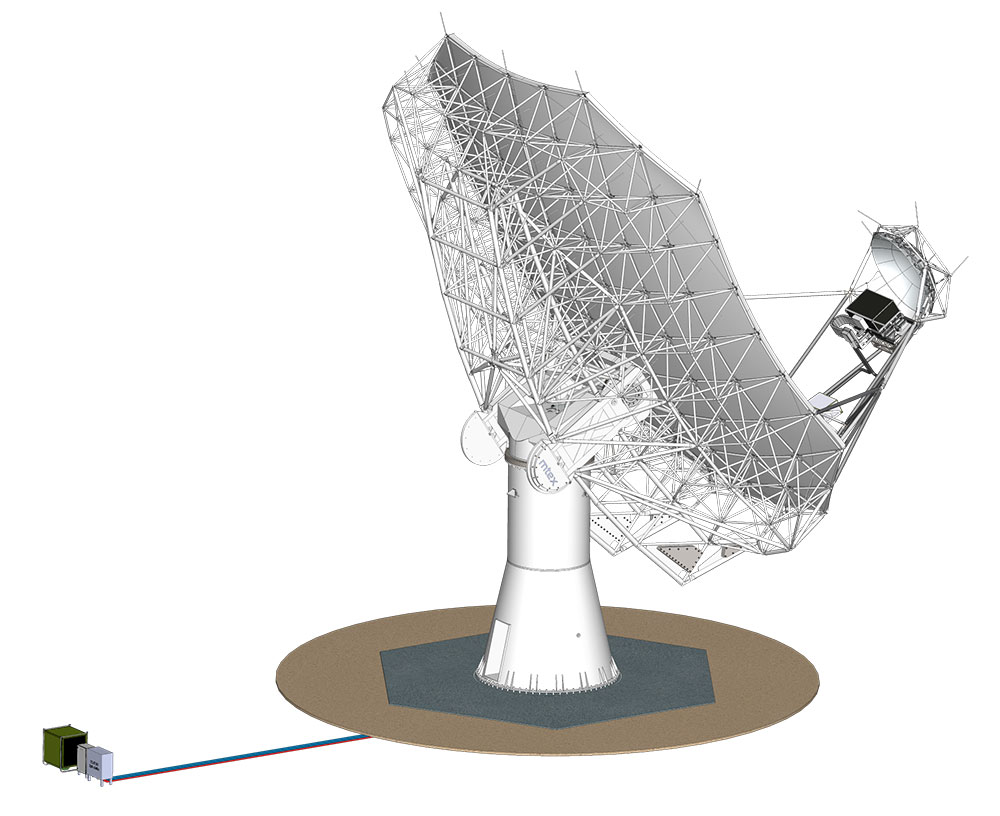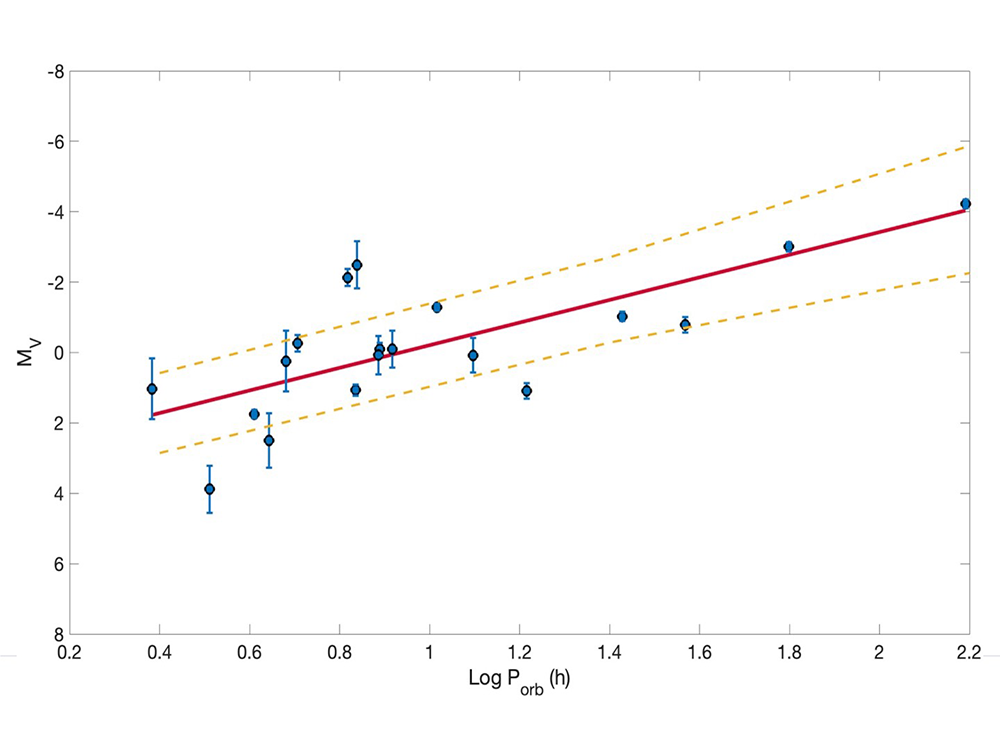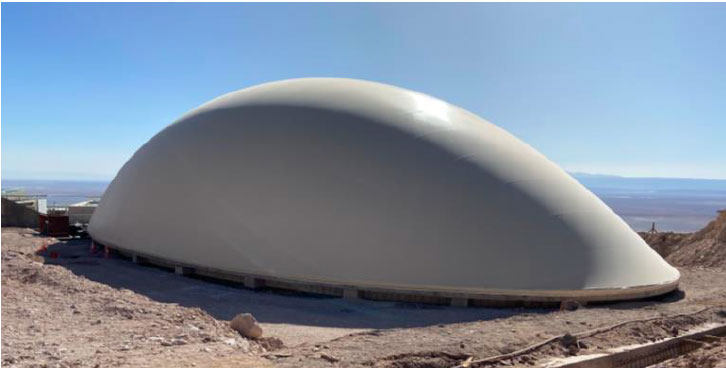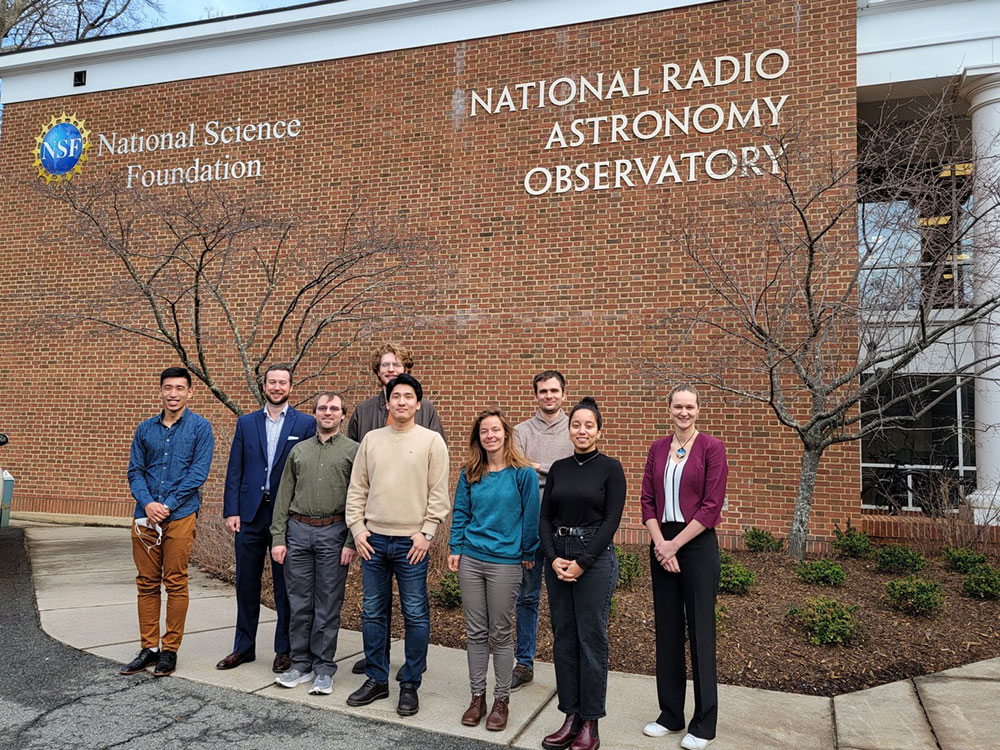NRAO eNews
Volume Vol#, Issue Iss#
Day# Month# Year#
NRAO eNews
Volume Vol#, Issue Iss# • Day# Month# Year#

Upcoming Events

NRAO Community Day at MIT Haystack
April 3 - 4, 2023 | Westford, MA

New Eyes on the Universe: SKA & ngVLA Conference
May 1 - 5, 2023 | Vancouver, Canada

2023 Gordon Research Conference on Origins of Solar Systems: Chemical and Dynamical Constraints on Planet Formation
Jun 11 - 16, 2023 | Mount Holyoke College, MA

19th Synthesis Imaging Workshop
Jun 13 - 21, 2023 | Charlottesville, VA

The Evolution of Gas in and around Galaxies
Jul 31 - Aug 4, 2023 | Stanley, ID
ngVLA Project News

An ngVLA prototype antenna.
[click to enlarge]
Progress Toward an ngVLA Prototype 18m Antenna
Following December's successful preliminary design review, mtex antenna technology GmbH began manufacturing the next generation Very Large Array (ngVLA) prototype 18m antenna. All servo long lead items are on order or have been received by mtex, and initial servo system integration tests have been performed. Currently mtex is finalizing the selection of bearings and gearboxes based on a common specification, as well as the selection of the surface treatment for the main reflector based on empirical tests of the thermal loading. Manufacturing files for the major steel assemblies are also being finalized.
The ngVLA Antenna Integrated Project Team is detailing the interface between the feed enclosure and the feed indexer, and also preparing the infrastructure at the VLA Antenna Test Site to receive the new prototype. A manufacturing status review is planned for September, followed by an antenna factory inspection in November. If these go well, the prototype antenna will be transported to the VLA Antenna Test Site, arriving in January 2024. The prototype antenna will then undergo final assembly and extensive single-dish testing before being integrated into the current VLA for interferometric testing.
New Eyes on the Universe: Last Call!
Please join us 1-5 May in Vancouver, Canada as we discuss and extend the cutting-edge science opportunities enabled by the unprecedented Square Kilometre Array-ngVLA coverage spanning three decades of frequency. We particularly encourage participation by early career scientists, who will be the major users of these observatories. April 7 is the deadline for in-person registrations, poster abstract submissions, and hotel reservations.
Extragalactic X-ray Binaries in Outburst

Relation between absolute magnitude and orbital period for X-ray binaries in outburst. A 68% confidence band is shown. Credit: Blackmon & Maccarone (2023)
[click to enlarge]
The name “X-ray binary” suggests systems best studied in the X-ray band, but these objects are transients that emit broadly across the range from radio through gamma-rays. An ideal way to find new X-ray binaries is when they appear as soft X-ray transients – X-ray binaries with either black hole or low-magnetic-field neutron star accretors, in which changes in the ionization state in the accretion disk can lead to large outbursts, raising the X-ray luminosity by a factor of about a million!
Traditionally, these systems have been found primarily in the X-ray band with all-sky monitors, which are sensitive enough to find them in the Milky Way. Only occasionally have extragalactic objects in this class been found via X-ray monitoring. However, in the era of the Legacy Survey of Space and Time (LSST), the most sensitive waveband for finding new outbursts from soft X-ray transients will become the optical band (Blackmon & Maccarone 2023).
In the optical band, the emission is driven by the heating of the outer accretion disk by the X-rays from the inner disk. For the longer-period X-ray binaries, which have the largest accretion disks and the brightest peak luminosities (see figure), LSST will find these transients out to a few Megaparsecs.
This LSST search volume is well-matched to ngVLA capabilities. For black holes, these outbursts in the Milky Way typically produce peak flux densities of about 100 mJy at 10 kpc distances, so at a Megaparsec they should have flux densities of about 10 microJy. Such signals can be detected with the ngVLA in short snapshots, allowing monitoring of the radio/X-ray correlations in these systems. And since neutron star X-ray binaries rarely reach the radio luminosities of black holes, the combination of LSST and ngVLA will open up the possibility of growing the sample of objects where differences between neutron star and black hole X-ray binaries can be distinguished.
Since 2015 the acronym ngVLA has appeared in 950+ publications indexed in the SAO/NASA Astrophysics Data System. This article continues a regular feature intended to showcase some of those publications. We are especially interested in showcasing work done by early-career researchers. The collection of showcase articles can be viewed online. Anyone wishing to volunteer to author a feature should contact Joan Wrobel.
ALMA Program News

Indoor Sport Facility (Multicancha)
[click to enlarge]
Indoor Sport Facility (Multicancha) at ALMA Operations Support Facility
The rather barren high altitude (2900m, 9500ft elevation) Operations Support Facility (OSF) is the focal point of all antenna Assembly-Integration-Verification (AIV) activities and for work associated with the extension and optimization of ALMA capabilities, as well as Principal Investigator (PI) Science observations. During the operations phase of the Observatory, the OSF is the workplace of some ALMA astronomers and of the teams responsible for maintaining proper functioning of all the telescopes. The ALMA team working at the telescope at the OSF generally work on a turno, living on-site for eight days or so at time before rotating back to their homes. To support the health and welfare of these workers, ALMA North America has recently completed a covered multi-court indoor sports facility, the Multicancha, providing activity space sheltered from the tropical sun and from the dust-bearing winds that scour the site. An Opening Ceremony for the Multicancha is planned for 14 March 2023, following the March 13 ALMA 10th Anniversary Celebration, also at the OSF.
ALMA science operations
ALMA science operations have resumed observing in the current C-4 configuration after conclusion of the February maintenance month.
ALMA Wideband Sensitivity Upgrade Progress
Important progress was made on the ALMA Wideband Sensitivity Upgrade (WSU) this month. The 2nd Generation ALMA Correlator contract was signed recently. The Conceptual Design Review for the Digitizer was held successfully this month in Bordeaux. Several NRAO North American ALMA Science Center staff participated. Additionally, a cryostat containing all ten ALMA frequency bands underwent testing.
ALMA Ten Years
Shortly after the 25th North American production antenna arrived at the ALMA Array Operations Site on 21 February 2013, the ALMA Inauguration took place at the OSF near San Pedro de Atacama, Chile on 13 March 2013.
Planning is underway now for ALMA at 10 years: Past, Present, and Future, a conference that will be held in Puerto Varas, southern Chile, 4-8 December 2023. Participants will look back at the Observatory’s accomplishments, highlight its latest results, and look forward to future technical developments. More information on the conference will be posted on the conference website as it becomes available. Registration is expected to open in April.
The ALMA partnership was formed ~ 20 years ago at the signing of the bilateral agreement between the US National Science Foundation (NSF) and the European Southern Observatory (ESO) on 23 February 2003. The partnership grew to be trilateral when Japan joined. ALMA is a partnership of ESO (representing its member states), NSF (USA) and NINS (Japan), together with NRC (Canada), MOST and ASIAA (Taiwan), and KASI (Republic of Korea), in cooperation with Chile.
NAASC Support for Conferences and Workshops
The North American ALMA Science Center (NAASC) has had a successful round of applications for support for Workshops and Conferences presenting synergies with ALMA science, technology, or broader impacts, with an emphasis on encouraging the participation of early career scientists. The following past and upcoming workshops/meetings were granted NAASC funding support in the current Fiscal Year.
- exoALMA Large Program Start of Science Workshop (invitation only), Boston, MA, USA, 5-9 December 2022
- Gordon Research Conference on Origins of Solar Systems: Chemical and Dynamical Constraints on Planet Formation, Conference and Seminar, Mount Holyoke College, South Hadley, MA, USA ,11-16 June 2023.
- COMPASS Large Program Workshop, Direction for Scientific Discovery with ALMA (invitation only) University of Michigan, Ann Arbor, MI, USA, July 2023
- Kavli-AUI Symposium, Astrochemistry VIII – From the First Galaxies to the Formation of Habitable Worlds, Traverse City, MI, USA, 10-14 July 2023
- New Era of AGN Science with the Vera C. Rubin LSST, NRAO, Charlottesville, VA, USA, 24-26 July 2023
- The Evolution of Gas in and around Galaxies, Stanley, ID, USA, 31 July-4 August 2023
Stay tuned for the next call for applications in August 2023. More information here.
ALMA Ambassadors Cycle 10 Proposal Preparation Events

Some Cycle 10 ALMA Ambassadors during their training at the NAASC and NRAO Headquarters in Charlottesville (14-16 February 2023).
[click to enlarge]
In advance of the Atacama Large Millimeter/submillimeter Array (ALMA) Cycle 10 Call for Proposals deadline, the North American ALMA Science Center (NAASC), along with current ALMA Ambassadors, have organized a series of ALMA proposal preparation workshops from 14-27 April 2023 (and an ALMA VLBI workshop from 3-4 April). The goal of these events is to provide users with the knowledge they need to carry out cutting-edge scientific research using the ALMA facilities. We are particularly interested in reaching new users, so no experience with radio astronomy is required to participate!
These ALMA talks are hosted by experienced postdocs and graduate students as part of the ALMA Ambassadors program. Registration for these events is free. The workshops are designed to assist you in proposal preparation and observation planning for ALMA Cycle 10, and may include talks on the following topics:
- ALMA Basics and Cycle 10 Capabilities
- Radio Interferometry Basics
- Cycle 10 Proposal Preparation and the Proposal Review Process
- Introduction to the ALMA Observing Tool
- ALMA Data Products, Archive Use, and Notes on the Pipeline Weblog
- Common Astronomy Software Applications (CASA) Simulations
- Science-ready Data Products
- Imaging with CASA.
Information on the locations and dates for these workshops is available on the NAASC Community Events webpage and in the table below.
| Ambassador | Location | Date |
|---|---|---|
| Dongjin Kim | MIT Haystack (NRAO Community Day) | 3 - 4 April |
| Arianna Long | UT-Austin | 14 April |
| David Rebolledo | Universidad Católica del Norte | 14 April |
| Jiayi Sun | Canadian Inst. for Theoretical Astrophysics | 18 April |
| Sinclaire Manning | University of Massachusetts, Amherst | 19 & 20 April |
| Emily Moravec | West Virginia University | 20 April |
| Adam Dong | University of British Columbia | 20 April |
| Marion Villenave | IPAC/California Institute of Technology | 25 April |
| Dongjin Kim | MIT Haystack | 25 April |
| Miguel Vioque | Universidad Diego Portales | 27 April |
Later in the year, the ALMA Ambassadors will run another series of community events focused on the processing and analysis of ALMA data. Those events will be announced in a future eNews, so stay tuned.
Recent Media Releases
|
ALMA Traces History of Water in Planet Formation Back to the Interstellar Medium |
|
|
Spotlight: Jesse Alexander and the Ham Radio Project |
|
|
Extreme Galaxy Reveals Clues to Early Supermassive Black Hole Formation |
|
|
French Astronomer Honored as 2022 Jansky Lecturer |
From the Archives
Ellen Bouton

[click to enlarge]
About this month's photo: On 16 April 2003, NRAO Director Fred Lo and Associated Universities, Inc. President Riccardo Giacconi broke ground for an addition to the Edgemont Road building in Charlottesville, Virginia. NRAO first occupied the Charlottesville building in January 1966, and very quickly outgrew it, so the electronics staff in the Central Development Lab moved to nearby buildings within a few years. Several attempts to enlarge the Edgemont Road building in the 1970s and 1980s came to naught, but ALMA and the decision to locate the North American ALMA Science Center in Charlottesville finally led to the 2003-2005 construction.
From the Archives is an ongoing series illustrating NRAO and U.S. radio astronomy history via images selected from our collections of individuals' and institutional papers. If readers have images they believe would be of interest to the Archives, please contact Ellen Bouton.

